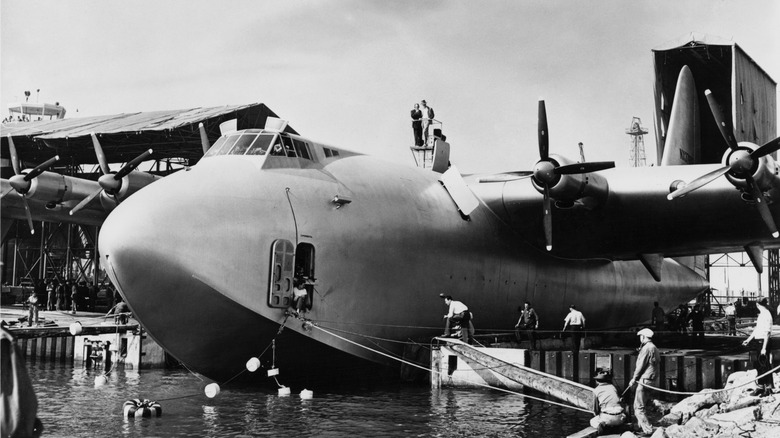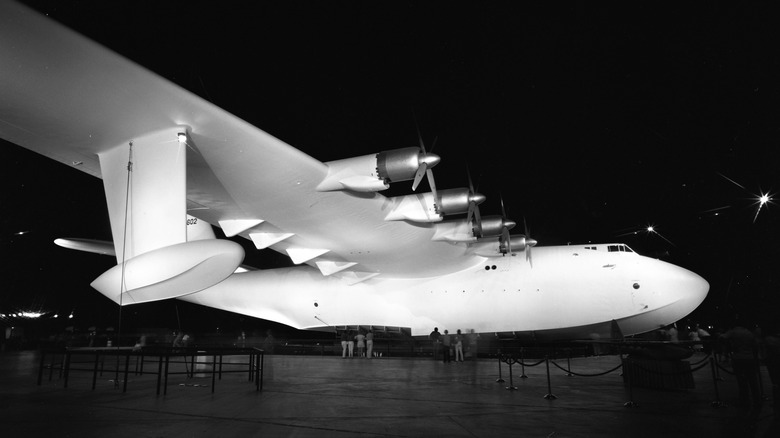The Incredible Spruce Goose Flying Boat That Only Flew Once
When the United States was fighting in World War II, metals like steel and aluminum were considered strategically important and funneled towards the construction of tanks, aircraft, guns, jeeps, and whatever else fighting forces needed to get an upper hand on the enemy. Those fighting forces needed to regularly cross the Atlantic ocean in large troop transport ships and in some cases converted cruise ships. German Kriegsmarine U-boats and submarines from the Imperial Japanese Navy were always on the prowl in the waters of the Atlantic and Pacific Oceans, ready to sink troop transports and accomplish two goals simultaneously: crush Allied morale and make a dent in the large numbers of Allied soldiers pouring into Europe and the Pacific Theater making life difficult for Axis powers.
In 1942, according to Boeing, Henry J. Kaiser (the same Kaiser behind Kaiser-Jeep and Kaiser Permanente) and the United States government came up with an idea to solve the problem of metal shortages and unfriendly seas with one project, the H-4 Hercules Flying Boat.
Too late to be combat effective
Noted entrepreneur Howard Hughes and his Hughes Aircraft Company were contracted to build a large wooden troop transport plane that could put troops overseas quickly and relatively safely. Five years and $40 million later, the war was over, Kaiser lost interest, but the aircraft was done. It's worth noting that despite gleaming metal planes that steal the spotlight like the North American P-51D Mustang, and planes like the B-17 Flying Fortress, there were notable wartime Allied planes made out of wood, like the De Haviland Mosquito that flew with the Royal Air Force
Despite being constructed out of birch, the plane was nicknamed "The Spruce Goose." It had a wingspan of over 319 feet, a length of over 218 feet, and was over 79 feet tall. For comparison, a Boeing 787 Dreamliner has a wingspan of 197 feet, is 224 feet in its longest configuration, and stands at 56 feet tall. The H-4 Hercules was absolutely massive. With its eight total engines, it was designed to carry 750 soldiers and all of their equipment or two tanks across the ocean into combat.
But the aircraft was not meant to be. It was no longer needed as both the end of the war and long range strategic bombers phased out the need for large concentrations of troops overseas. It flew one time in 1947 for a total of a mile in Long Beach California. To this day, it's the largest wooden aircraft ever built and now resides at the Evergreen Aviation and Space Museum in McMinnville, Oregon.

